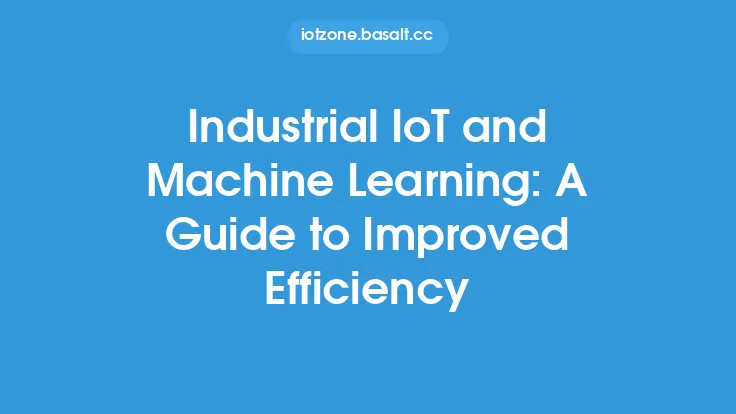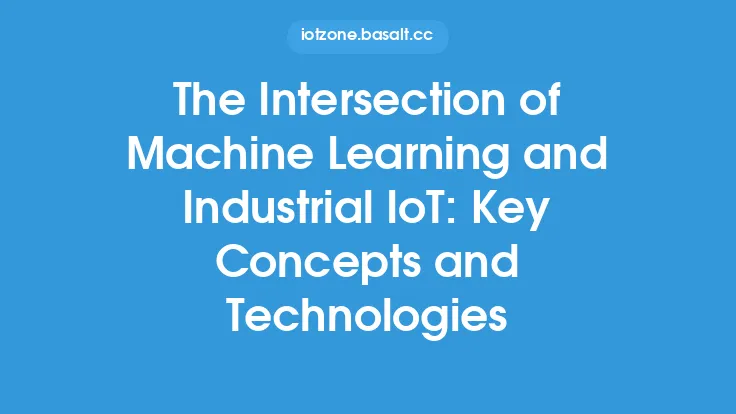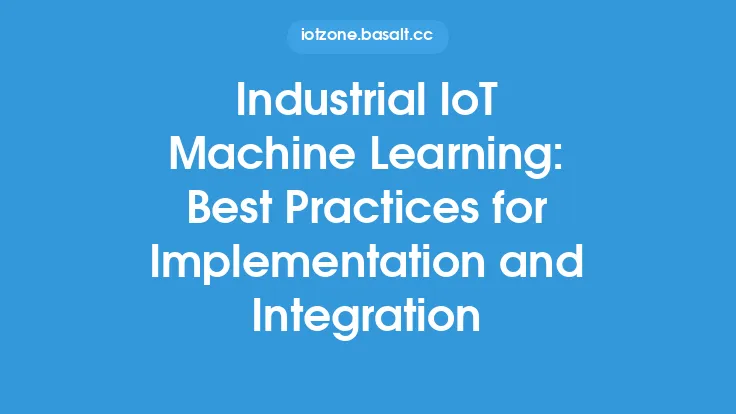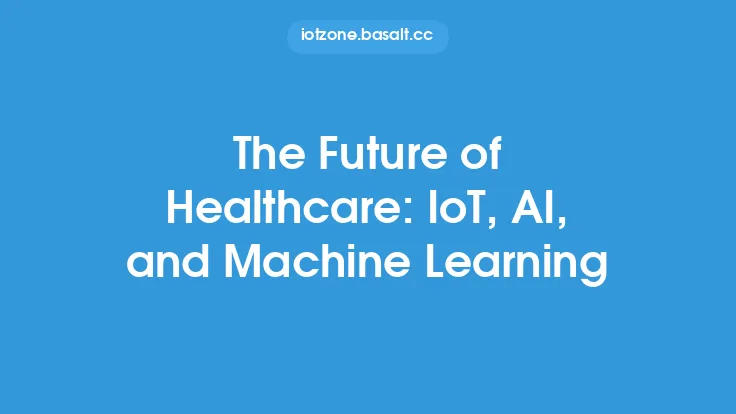The integration of machine learning (ML) in Industrial Internet of Things (IIoT) has revolutionized the way industries operate, making them more efficient, productive, and competitive. IIoT refers to the network of physical devices, vehicles, home appliances, and other items that are embedded with sensors, software, and connectivity, allowing them to collect and exchange data. The application of ML in IIoT enables the analysis of this data, uncovering patterns, trends, and insights that can inform decision-making, predict maintenance needs, and optimize operations.
Introduction to Machine Learning in IIoT
Machine learning is a subset of artificial intelligence (AI) that involves the use of algorithms and statistical models to enable machines to perform a specific task without using explicit instructions. In the context of IIoT, ML can be applied to various aspects, including predictive maintenance, quality control, supply chain management, and energy management. The use of ML in IIoT has numerous benefits, including improved efficiency, reduced downtime, and increased productivity. However, it also poses several challenges, including data quality issues, security concerns, and the need for specialized skills.
Challenges in Implementing Machine Learning in IIoT
One of the significant challenges in implementing ML in IIoT is the quality of the data. IIoT devices generate vast amounts of data, which can be noisy, incomplete, or inconsistent. This can affect the accuracy of the ML models, leading to poor decision-making. Another challenge is the security of the data, as IIoT devices are vulnerable to cyber-attacks. The use of ML in IIoT also requires specialized skills, including data science, programming, and domain expertise. Additionally, the integration of ML with existing IIoT systems can be complex, requiring significant investment in infrastructure and resources.
Technical Requirements for Machine Learning in IIoT
The implementation of ML in IIoT requires a range of technical capabilities, including data processing, storage, and analytics. The data generated by IIoT devices can be structured or unstructured, and it requires specialized tools and techniques to process and analyze it. The use of cloud computing, edge computing, and fog computing can help to reduce the latency and improve the scalability of ML applications in IIoT. Additionally, the use of containerization, orchestration, and DevOps practices can help to streamline the development, deployment, and management of ML models.
Future Directions for Machine Learning in IIoT
The future of ML in IIoT is promising, with several emerging trends and technologies that are expected to shape the industry. One of the significant trends is the use of edge AI, which involves the deployment of ML models on edge devices, reducing the latency and improving the real-time decision-making. Another trend is the use of explainable AI (XAI), which involves the development of ML models that can provide insights into their decision-making processes. The use of transfer learning, meta-learning, and few-shot learning is also expected to improve the efficiency and effectiveness of ML models in IIoT.
Real-World Applications of Machine Learning in IIoT
The application of ML in IIoT is diverse, ranging from predictive maintenance to quality control. In the manufacturing sector, ML can be used to predict equipment failures, reducing downtime and improving productivity. In the energy sector, ML can be used to optimize energy consumption, predict energy demand, and detect anomalies in the grid. In the transportation sector, ML can be used to predict traffic patterns, optimize routes, and detect potential safety hazards. The use of ML in IIoT can also improve the supply chain management, enabling real-time tracking and monitoring of goods and materials.
Best Practices for Implementing Machine Learning in IIoT
The implementation of ML in IIoT requires a range of best practices, including data quality management, model selection, and hyperparameter tuning. The use of data preprocessing techniques, such as data cleaning, feature scaling, and feature engineering, can help to improve the accuracy of the ML models. The selection of the right ML algorithm and model is also critical, depending on the specific use case and requirements. The use of hyperparameter tuning techniques, such as grid search, random search, and Bayesian optimization, can help to optimize the performance of the ML models.
Conclusion
The integration of ML in IIoT has the potential to transform the industry, making it more efficient, productive, and competitive. However, it also poses several challenges, including data quality issues, security concerns, and the need for specialized skills. The use of emerging trends and technologies, such as edge AI, XAI, and transfer learning, can help to improve the efficiency and effectiveness of ML models in IIoT. By following best practices, such as data quality management, model selection, and hyperparameter tuning, organizations can unlock the full potential of ML in IIoT, driving business value and competitive advantage.





